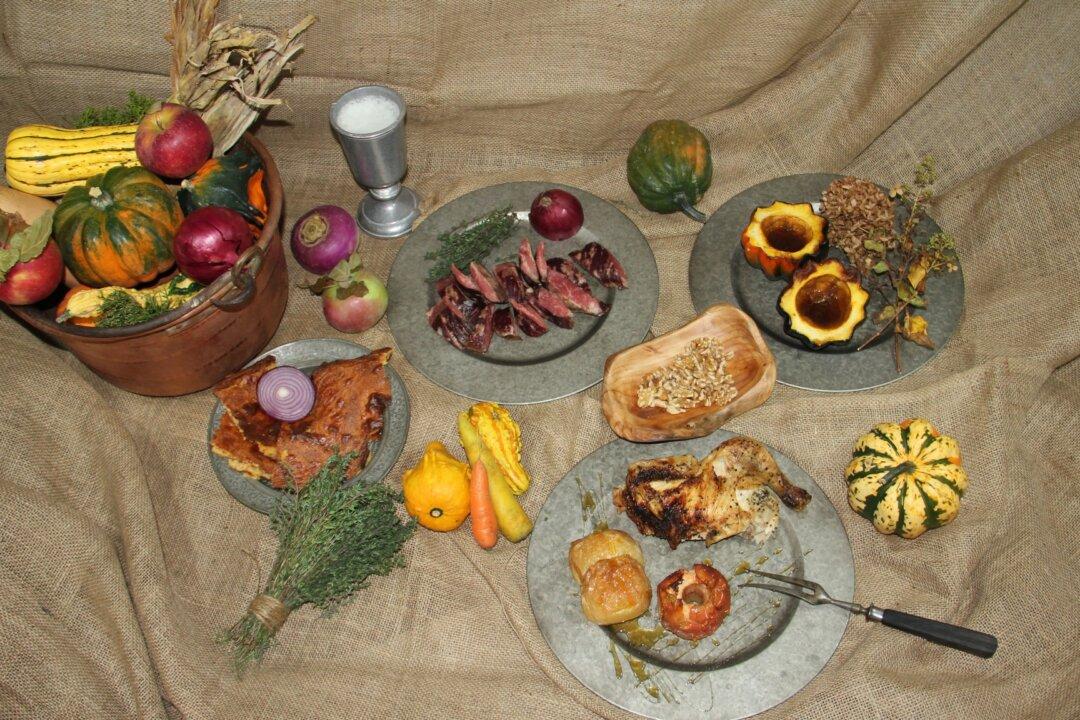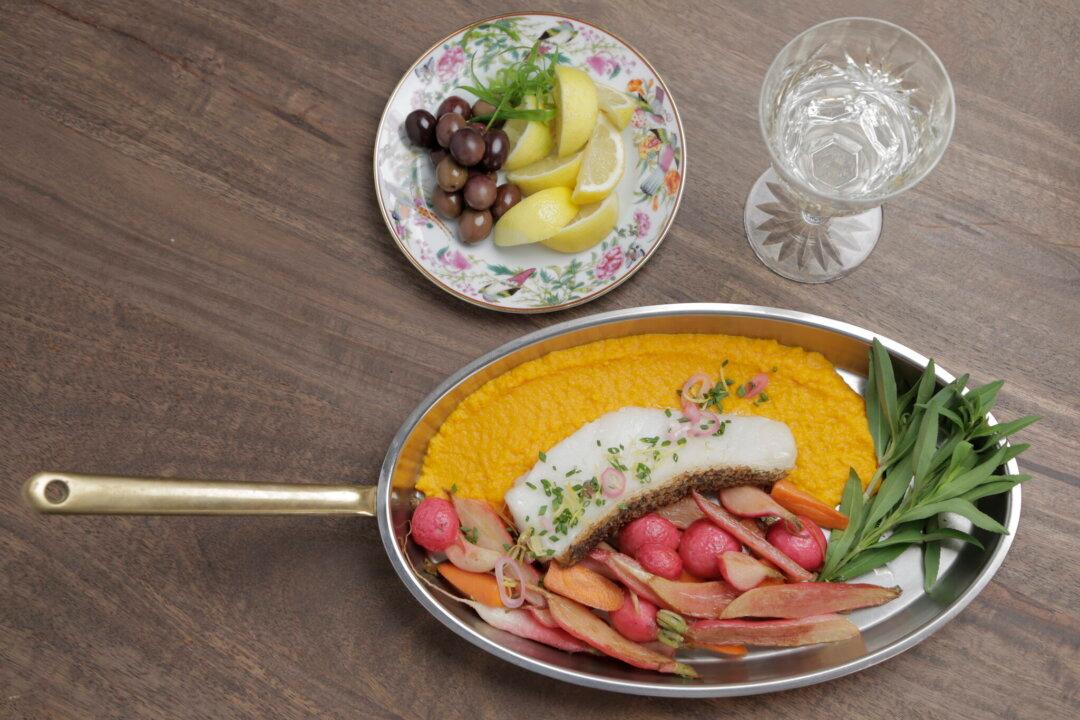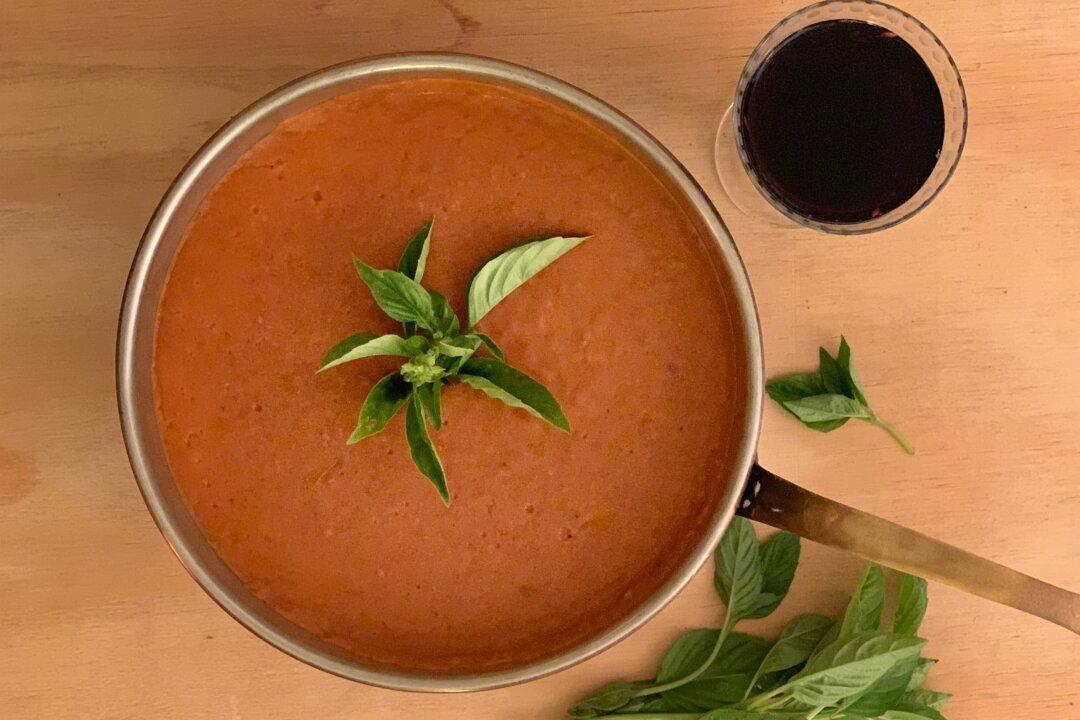Today’s Thanksgiving meal, with a giant turkey, mashed potatoes, cranberries, and pumpkin pies, bears very little resemblance to what was served at Plymouth Plantation (then spelled Plimoth) 399 years ago. Then, the meal was not followed by the watching of a football game.
To faithfully recreate the first meal of thanks for a bountiful harvest is a challenge. We know very little about what was actually consumed. What further complicates matters for a modern cook is that that cooking techniques have evolved: Few of us still cook over an open fire, and our easy access to a plethora of spices and ingredients is not even close to what the Pilgrims had available.





